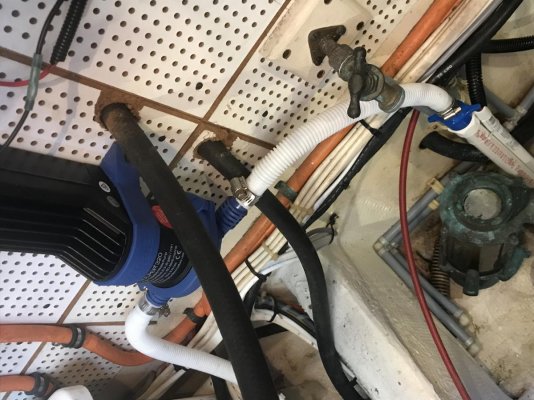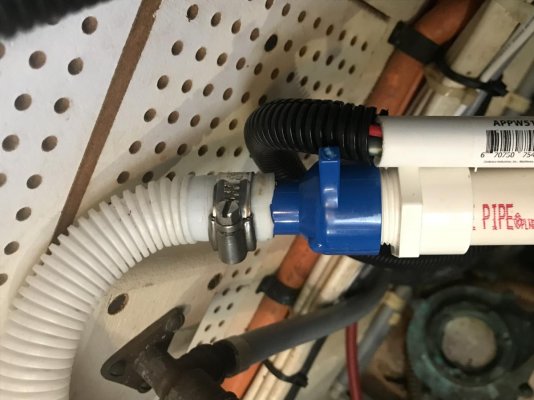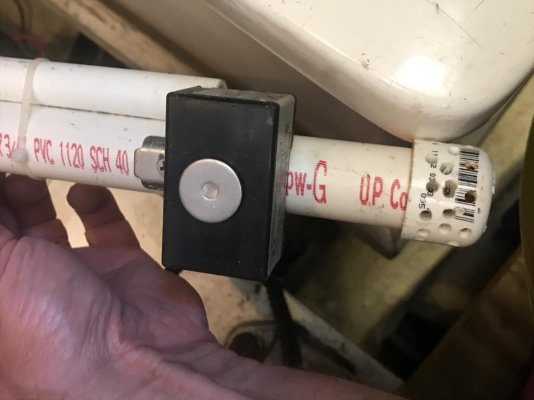JohnO
Veteran Member
- Joined
- Nov 13, 2020
- Messages
- 77
- Vessel Name
- Tsula
- Vessel Make
- Kadey-Krogen 42
Purchased our new-to-us boat about 6 months ago and just got around to a thorough bilge cleaning / repainting and replacing the rather filthy bilge pump and hoses (Rule 2000 manual with a float switch). Problem I'm having is the distance to the thru hull results in backflow which makes the pump cycle constantly. I tried raising the float switch (a possible solution that I read somewhere). The physics didn't totally make sense to me, but I tried it anyway. No avail. Still the same problem, although I can at least manually suck out some water once it starts cycling.
I've read that others have just put in a check valve, which I don't want to do, and shortening the run is not feasible. I'm slowly tracing the water (which I believe is coming from a leaky water heater and possibly condensate lines from the fridge/freezer), but need a working bilge solution regardless. Could use some help on how best to address.
I'm sure this topic has been covered at least a few times, but having trouble finding just the right thread - so feel free to point me in that direction if easier.
I've read that others have just put in a check valve, which I don't want to do, and shortening the run is not feasible. I'm slowly tracing the water (which I believe is coming from a leaky water heater and possibly condensate lines from the fridge/freezer), but need a working bilge solution regardless. Could use some help on how best to address.
I'm sure this topic has been covered at least a few times, but having trouble finding just the right thread - so feel free to point me in that direction if easier.

 Over a year ago I installed one in main cabin bilge and another in the engine room bilge. They run about ~5 minutes at noon and the bilges stay bone dry. I also routed the AC and dehumidifier pan drains to the shower sump which really helped in the cabin. No more odors either.
Over a year ago I installed one in main cabin bilge and another in the engine room bilge. They run about ~5 minutes at noon and the bilges stay bone dry. I also routed the AC and dehumidifier pan drains to the shower sump which really helped in the cabin. No more odors either.

